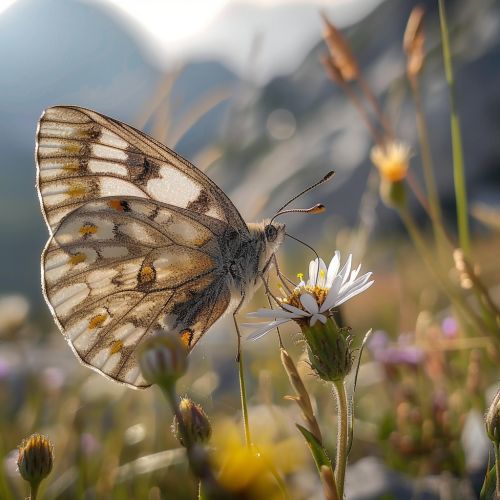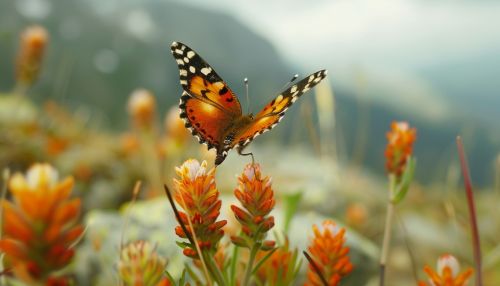Alpine butterfly
Overview
The Alpine butterfly, or Erebia epiphron, is a species of butterfly in the family Nymphalidae. It is found in the Alpine and subalpine zones of the European mountain ranges, from the Pyrenees and the Alps to the Carpathians. The species is characterized by its distinctive wing pattern and its adaptation to cold, high-altitude environments.


Description
The Alpine butterfly is a medium-sized butterfly with a wingspan of 34 to 42 millimeters. The upper side of the wings is dark brown, with a band of orange spots along the edge. The underside of the hindwings has a distinctive pattern of white, black, and orange, with a row of small white spots within a larger orange band. This pattern serves as a form of camouflage, helping the butterfly blend into its rocky alpine surroundings.
Distribution and Habitat
The Alpine butterfly is found in the mountain ranges of Europe, including the Pyrenees, the Alps, the Carpathians, and the Balkans. It inhabits the alpine and subalpine zones, typically at altitudes of 1,500 to 2,500 meters, but can be found as low as 1,000 meters and as high as 3,000 meters. The species prefers rocky areas with sparse vegetation, including scree slopes and rocky meadows.
Life Cycle
The life cycle of the Alpine butterfly begins with the laying of eggs on the host plant, typically a species of grass. The larvae hatch after about two weeks and feed on the grass until they are ready to pupate. The pupal stage lasts for about two weeks, after which the adult butterflies emerge. The adults are typically active from June to September, depending on the altitude and the weather conditions.
Adaptations
The Alpine butterfly has several adaptations that allow it to survive in its harsh, high-altitude environment. Its dark wing coloration helps it absorb sunlight and maintain its body temperature in the cold alpine climate. The species is also adapted to the low oxygen levels found at high altitudes, with a higher concentration of hemoglobin in its blood than low-altitude species. Furthermore, the Alpine butterfly has a short, compact body shape that reduces heat loss.
Conservation Status
The Alpine butterfly is not currently considered to be at risk of extinction. However, like many alpine species, it could be threatened by climate change, which is predicted to cause a shift in the distribution of alpine habitats. Conservation efforts for the species are primarily focused on protecting its alpine habitat from development and climate change.
